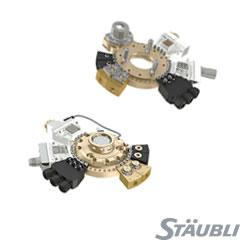The Rise of Chinese Robotics Companies: A Matter of When, Not If
Historically, the industrial robotics space has traditionally been dominated by Japanese and European vendors, while the commercial robotics has been the stronghold of robot startups from the United States and Europe
Historically, the industrial robotics space has traditionally been dominated by Japanese and European vendors, while the commercial robotics has been the stronghold of robot startups from the United States and Europe. However, recent developments suggest that Chinese vendors are staking a claim in the robotics territory, according to ABI Research, a market-foresight advisory firm providing strategic guidance on the most compelling transformative technologies.
The rise of Chinese robotics suppliers is due to a strong government pressure and heavy investments in R&D by the companies. China is expected to become the worlds largest single market of industrial robots, with total shipments of 134,000 in 2018, based on ABI Researchs forecast. To become the leader in robotics technology, the Chinese government released its Guidance for the Development of the Robotics Industry for 2016 to 2020. At the same time, Chinese robotics companies and internet giants have been investing in key robotics technologies. There have been some early successes: Shanghai Siasun has launched its own dual-arm, 7-axis collaborative robot and Geek+ managed to raise US$ 60 million in the latest funding round.
Admittedly, it would be very challenging for Chinese industrial and commercial robotics suppliers to replicate the roaring success of DJI, and to a certain extent Ecovacs, in both domestic and international markets. Chinese industrial robotics vendors only have 30% market share in the domestic market led by Shanghai Step Electric, Shanghai Siasun, Estun, and Guangdong Topstar Tech. Despite being backed by major e-retailers such as Alibaba and Suning, Geek+ will find the overseas market a different ball game, as it squares off with established players, such as GreyOrange, Swisslog, Fetch Robotics and Magazino.
In addition, Chinese robotics suppliers are still lagging in terms of key components. "Chinese robotics vendors are still sourcing key robotics components from international companies. Top reduction gear vendors, for example, mainly come from Japan, while German firms have been in the leading position of gripper and machine vision technology. Meanwhile, U.S. startups have been introducing innovative solutions in actuator, LiDAR, and soft material handling," continues Su. "All these key components are essential to the competitive advantage and cost margin of robotics manufacturers. There will be a long road ahead before Chinese robotics suppliers fully develop in-house solutions but given what we have observed from other technology sectors, it is a matter of when, not if."
These findings are from ABI Researchs Industrial and Commercial Robotics Market report. This report is part of the companys Robotics, Automation & Intelligent Systems research service, which includes research, data, and Executive Foresights.
# # #
About ABI Research
ABI Research provides strategic guidance for visionaries needing market foresight on the most compelling transformative technologies, which reshape workforces, identify holes in a market, create new business models and drive new revenue streams. ABIs own research visionaries take stances early on those technologies, publishing groundbreaking studies often years ahead of other technology advisory firms. ABI analysts deliver their conclusions and recommendations in easily and quickly absorbed formats to ensure proper context. Our analysts strategically guide visionaries to take action now and inspire their business to realize a bigger picture. For more information about ABI Researchs forecasting, consulting and teardown services, visionaries can contact us at +1.516.624.2500 in the Americas, +44.203.326.0140 in Europe, +65.6592.0290 in Asia-Pacific or visit www.abiresearch.com.
Featured Product

